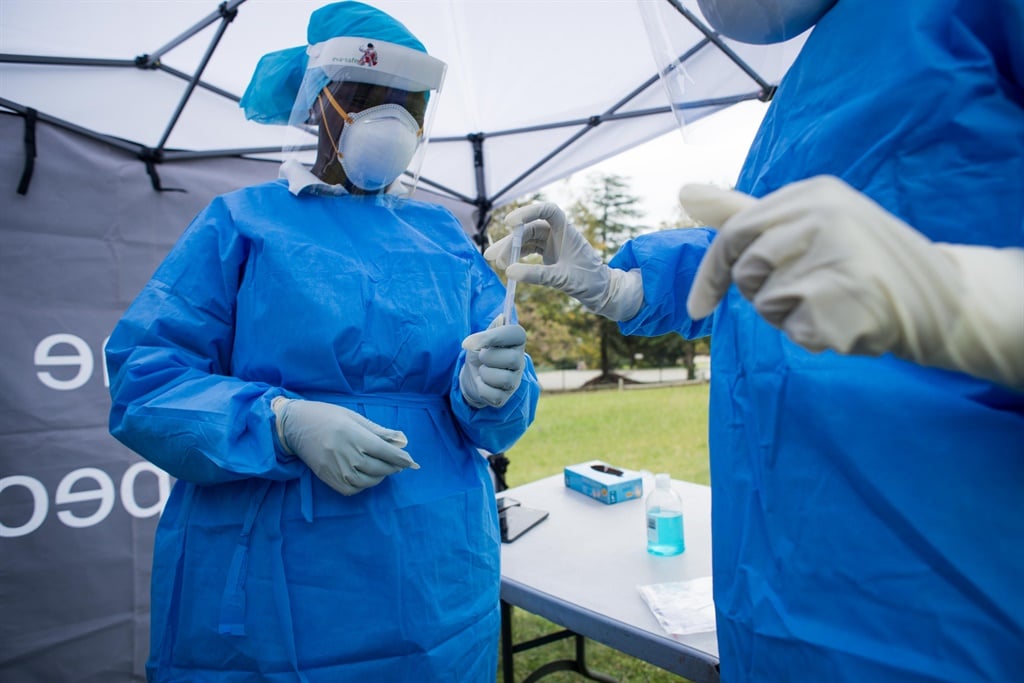Half of people tested positive for coronavirus did not show symptoms – Makhura
Today, cases of the virus were doubling roughly every two weeks, Salim said.
Levels of transmission of the virus within communities remained low, he said, citing data from South Africa’s community screening and testing programme that showed about 3% of those referred for testing were diagnosed with the virus.
Expect outbreaks in schools and workplaces
Starting 1 May, lockdown restrictions would ease slightly – allowing more workers to return to their jobs, while grades 7 and 12 pupils were expected to be back in class in late May, the Department of Basic Education announced earlier this week.
But workplaces and classrooms will not be immune to what the Karims expect to be small local outbreaks across the country.
“We cannot stop this virus from spreading. We have to find a way of living with it,” they said.
Level 4 lockdown: Students won’t return to campus, risk is too great – Blade Nzimande
Various mathematical modelling exists locally and internationally to try to predict the course of South Africa’s Covid-19 epidemic.
Salim said most projections agreed a significant increase in cases was expected sometime between July and September. When this happens, the government may re-institute a level 5 national lockdown, much like the one that ended on 30 April.
“We have the next two to three months to get back to our lives … and we can then expect when the transmission starts occurring rapidly, that alert levels will go back up rapidly,” he added.



Public testing for Covid-19 at various points in Gauteng. (Photo Gallo Images)
Another level 5 lockdown is possible
President Cyril Ramaphosa recently announced the country had developed five different Covid-19 risk-alert levels and that – using hyper-local data on the epidemic – these varying risk levels could be applied nationally, provincially and even at a district level.
These risk levels are determined mainly by how many Covid-19 cases are being reported in an area and the strain on healthcare services.
But periodic outbreaks are likely to be part of what Quarraisha called a “new era” until an effective vaccine against SARS-CoV-2 can be found.
READ | Should you wear a mask while you run? Your lockdown exercise questions answered
“The absolute reality is that the virus is here and we’re going to have to live with it,” she said. “We could cocoon ourselves for 18 months until we get a vaccine or we can start slowly start doing things.”
She added: “But I wouldn’t call it going back to normal.”
The duo said South Africans would need to remain vigilant despite the easing of lockdown restrictions, practicing social distancing and continuing to don cloth masks and wash their hands frequently.
We are testing enough people for the coronavirus
By Thursday afternoon, the country had conducted 185 497 tests for the coronavirus since it was detected locally in March. Still, there has been widespread concern it does not have the capacity to test enough people to know for sure the size of the pandemic.
Covid-19 tracker: All the latest figures as the coronavirus spreads in SA
To increase testing, the government has roped in academic and research laboratories to perform the complicated test required to diagnose Covid-19 alongside private and public laboratories.
But so far, the country has not been able to process more than about 11 600 tests in a single day – far fewer than the 30 000 to 35 000 the National Health Laboratory Services said it had the capacity to do by the end of April.
But Salim said based on the rate of people testing positive for the new virus, current testing levels were adequate.
“We could do 30 000 tests per day but doing that many tests per day may not be the wisest use of our resources at this stage,” he added. “Our target [number for] testing is much lower than 30 000 test per day – we should be doing about 8 000 to 10 000 tests per day instead.
“But our priority is to make Covid-19 testing available to everyone who is sick.”
– This story was produced by the Bhekisisa Centre for Health Journalism. Subscribe to the newsletter.


